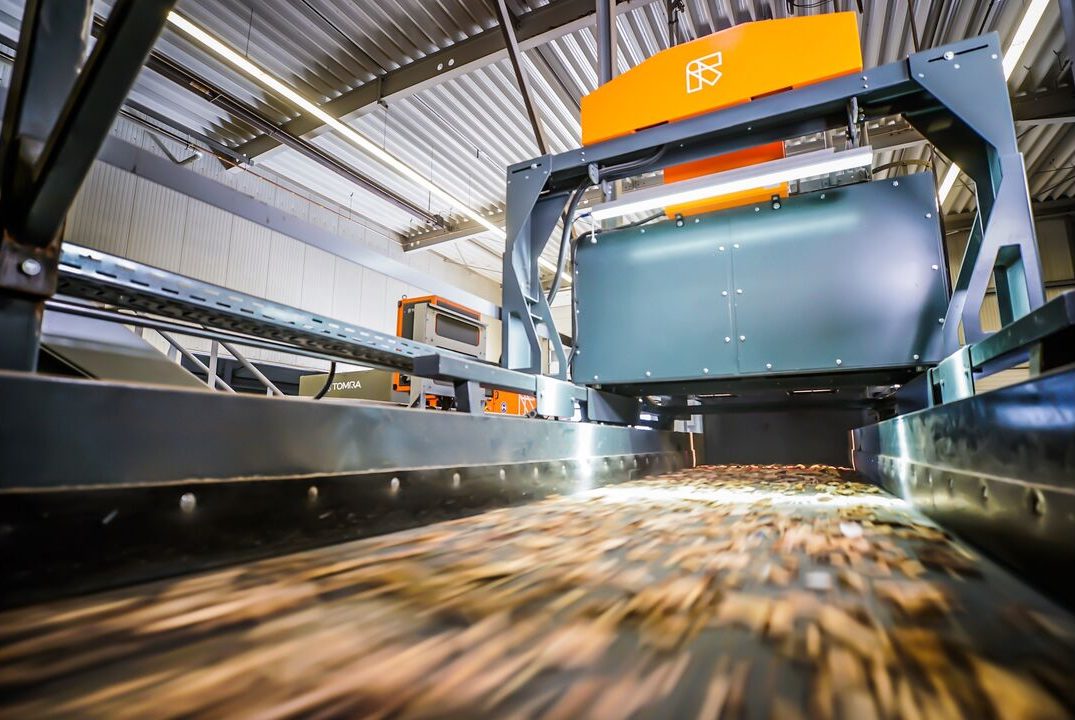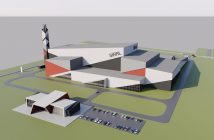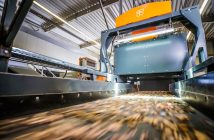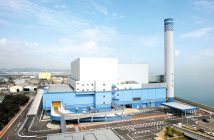VP Head of Global Sales and Marketing at TOMRA, Fabrizio Radice talks to Waste Management World about how deep learning is transforming the waste sorting and recycling processes, the economic and environmental benefits of smart waste management solutions and how it will shape the industry

1) Can you provide an overview of how smart solutions are transforming waste sorting and recycling processes compared to traditional methods?
We define smart solutions in waste sorting and recycling as technologies using artificial intelligence (AI) and deep learning.
For decades, AI has been connected with almost everything we do in our daily lives, from using Google to our phones and many more. It is nothing new, neither is it new to the recycling industry as the industry continues to be transformed by AI. With an increase in circuit automation and automated sorting processes, AI technologies already have a tremendous impact on our industry, globally. Optical sorters with valve block ejection have leveraged traditional AI for decades to drive sorting circuit automation and recycled product purity, enhancing efficiencies in MRFs and PRFS around the world and enabling more granular sorting of complex material fractions.
Traditional AI is used in combination with a variety of sensors – RGB cameras, near-infrared (NIR), laser, EM (electromagnetic), and X-ray – to automatically detect and process fractions. Traditional AI was a manual process: engineers the classifiers and deploys them into the in-house developed sorting software.
The game-changer for the industry is AI’s subset called Deep Learning. This powerful, smart technology opens doors to new material and revenue streams, recovering materials that are hard or impossible to distinguish from traditional technologies. A good example of this is the separation of wood by material type and the distinction of PET white opaque bottles in a PET stream. Also, the detection of PP and PE food-grade materials is possible with deep learning technologies.
In a nutshell, we consider deep learning technologies to be a powerful tool to bring product qualities and material recovery levels to a new level. A lot of materials that are currently sorted with traditional technologies, can now be recovered thanks to explicitly trained artificial neural networks – the heart of deep learning technologies.
Today, the demand for smart technologies is driven by the need to create high-quality recyclates, open new revenue streams that can’t be accessed with conventional technology and provide sufficient volumes of recyclable materials to the market. With increasingly stringent regulations on recycled content in Europe, we will see a growth in demand.
Moreover, AI can:
- Enable predictive maintenance
- Assist in quality control by inspecting recycled materials for impurities and defects
- Monitor and report on the sorting performance of the equipment to allow for improvements.
As we see, the potential of AI and its subset of deep learning is huge.
2) How do technologies like artificial intelligence, robotics, and automation contribute to improving the efficiency and accuracy of waste sorting and recycling?
Artificial intelligence has been used for decades in our traditional sorting technologies and software, allowing for an automated sorting process. As circuit automation enables plant operators to process considerably higher volumes than with manual sorting practices, efficiency levels are much higher. The plant can process multiple tons of waste a week and the software accurately detects atomic differences in materials (e.g. PET bottle vs. tray) to create high-purity mono fractions out of a mixed waste stream.
Thanks to AI-supported software and sensors (such as NIR, RGB cameras, magnetic (X-ray) sensors, and many more), recyclable materials can be recovered and sorted by both material type and color, even the smallest plastic flakes. And this, at high throughputs. The advantages of the automated sorting process are huge and so is the revenue potential. However, an even more efficient and accurate sortation can be realized with the adoption of deep learning-based sorting technologies.
Optical sorters equipped with robotic arms -as they are widely used in MRFs around the world- are currently creating much buzz related to AI. The truth is that robots are using AI in their software. However, robots are optical sorters that use just another ejection method – a robotic arm rather than valve blocks. The traditional valve block optical sorter employed in thousands of recycling facilities for decades uses precisely timed pulses of air in a drop-eject method to sort materials at rates reaching up to 8 tons per hour, depending on the sorting task. Conversely, the new robotic arms more closely mimic a human’s picking motion of multiple fractions at rates slightly higher than that of a person, roughly 0.5 tons per hour. For TOMRA, both optical sorters with valve blocks and robotic arms have a place in the recycling facility. While valve block optical sorters generate high throughputs, robots can be ideally used for final quality control.
3) Can you explain how AI-powered algorithms assist in recognizing and categorizing various recyclable materials, even in complex and mixed waste streams?
Traditional AI or AI-based classification software is used in combination with (multiple) sensors, depending on the application. For instance, if an NIR sensor scans a product on the belt, it sends the wavelength information of the scanned product to the software. Based on the wavelength information, the software determines the material type, e.g. PET, of the product scanned. If it is PET and PET is the target fraction, the software sends this information to the valve blocks of the sorting unit which then sorts the PET-based product in the respective fraction. This all happens in seconds, imaging a belt speed of up to 4.5m per second, and is enabled by smart technology.
TOMRA’s deep learning-based products can moreover do a more granular sorting, enhancing the capabilities of traditional technologies. This, in turn, leads to high-purity and high-quality sorting results.
4) Can you discuss the economic and environmental benefits of implementing smart waste sorting and recycling technologies, such as increased recycling rates and reduced waste in landfills?
Economic benefits are referred to in question 2.
Automation and advanced sensor-based sorting technologies allow for consistently higher recovery rates and therefore a steady stream of recyclables that can be further processed and/or traded on the market.
Traditional AI-supported software used in optical sorting machines already allows for the differentiation of numerous material types and material colors. This allows sorting facilities and recyclers to create pure mono materials of one type or color. These fractions can then be further processed into recyclates. The higher the purities achieved in sorting, the higher the recyclate’s quality and the likelihood of meeting the quality requirements for high-end applications, e.g. bottle-to-bottle applications.
With deep learning technology, sorting facilities can go even further. Depending on the application the neural network is trained for, deep learning sorting technologies can detect and recover materials that are hard or impossible to detect with conventional technologies, such as NIR sensors. Thus, more materials are brought back into the loop (increased recycling rates), diverted from landfill, and, depending on the qualities, not downcycled and used for more demanding applications.
Recovering more materials benefits the environment as fewer materials are lost to landfill and more recyclates can be brought to the market and used in the production of secondary raw materials.
Thanks to mixed waste sorting (MWS) and the use of sensor-based sorting technologies before disposal, plastics not captured in dedicated recycling streams can be recovered. As a result, we can avoid up to 730 million tonnes of CO2 emissions by 2030. So, the benefits for the environment and business are at hand.
5) Are there challenges associated with integrating these advanced technologies into existing waste management infrastructures, and how are these challenges typically overcome?
Sensor-based sorting units with AI-supported classification software already is an integral part of automated waste sorting facilities and employed in numerous sorting and recycling plants around the world. TOMRA’s sorters, for instance, can be seamlessly integrated into existing plants as well as new plants.
Also, deep learning-based sorting technologies can be added to existing sorting machines. We at TOMRA have one deep learning-based add-on for our AUTOSORT™ sorting units that can be added to already installed machines.
Let me give you an example: a customer sees a change in the waste stream and has more opaque PET bottles in a previous cleaner PET stream. As opaque PET bottles contaminate the stream and must be removed, we closely worked with the customer to find a solution that meets his business needs and purity requirements. We knew that we could only solve the challenge with deep learning technology. NIR sensors can’t distinguish between clear, light blue transparent bottles and hard-to-detect white opaque bottles. Thus, we trained an artificial neural network to detect and remove opaque PET bottles (and many other contaminants) and added our GAIN deep learning technology to existing AUTOSORT units. Since the smooth installation, our customer can create a clean PET bottle stream. More information here.
A challenge we see in using deep learning technologies lies in the labor shortage that is prevalent in numerous countries. To develop an artificial neural network, a huge amount of data and files must be labeled correctly, and the network be trained. Moreover, and as it is the case with any new technology, the openness to innovation must be given.
Furthermore, we might see challenges in the use of sensor-based sorting technologies – whether equipped with traditional AI-supported software only or with deep learning technologies- in countries that don’t have a mature recycling and waste management infrastructure yet. In developing countries, for instance, the infrastructure of collection, sorting, and recycling must be built first before they can leverage the potential AI holds. However, we see that progress is being made worldwide, supported by legislation, the urgency to fight plastic litter leakage and keep materials in continuous use to protect our limited resources.
6) How do smart solutions address the need for flexibility in sorting a wide variety of materials and adapt to changes in waste composition over time?
Adaptability is key for any sorting or recycling plant. Input streams change and contamination levels vary too. While the input changes, the required results, and quality levels stay the same. Therefore, plant operators must be equipped with the right technology to adapt to the dynamic.
Deep learning enables the sorting of new materials and helps to achieve new higher purities in existing applications. Consequently, plant operators profit from higher flexibility and can more easily and successfully adapt to any changes in waste stream composition or quality requirements.
Deep learning technologies excel in adaptability for more challenging sorting tasks. If we take an artificial neural network that is trained to sort wood by type, plant operators can decide which materials they want to target and simply adjust the settings. While in one week, the infeed is a mix of processed and unprocessed wood, the operator might aim to recover the processed wood chips and remove any other processed materials. Another week, he might find more MDF in the wastewood stream. As MDF is difficult to recycle and considered a contaminant, any MDF materials must be recovered from the stream to have a high-quality wood fraction that is suitable for the production of premium panelboards. To do so, the plant operator can change the machines’ settings and ask for the removal of MDF. The deep learning software has been trained once with thousands of pictures, holding a pool of object information that it can draw on in any sorting task.
7) What level of customization and scalability is possible with smart waste sorting solutions to cater to different waste management scenarios and locations?
Customization is key for any MRF and PRF. Our customers must have the right solutions to reach their goals and maximize output and yield. This is why our machines are programmed for specific sorting tasks, customized to our client’s requirements. When building a new facility for our customers with one of our partners, we jointly analyze the needs (volumes to be processed; expected input materials and target fractions; available space and future extension plans, etc.) and design a facility that meets the requirements and can be further scaled.
As we have a huge product portfolio with numerous machines for different applications, our clients can easily add another machine to their plant. Our systems work in synchrony. Flake sorters can even be stacked above each other. This is quite common and saves a lot of space. However, the scalability of smart technologies and sensor-based sorting must be considered in a holistic approach. The plant setup influences the level of adaptability and scalability as well.
Adapting to the different locations is of great importance too, especially when it comes to waste composition that strongly depends on the local waste collection practices. Optical sorting technology must be highly adaptive to different scenarios to continue providing the service our customers and we ourselves are committed to. For more information, see answer 6.
8) What considerations should organizations keep in mind when evaluating the investment in smart solutions for waste sorting and recycling?
Companies aiming to invest in smart sorting technologies must evaluate their waste flow, the desired process, and the outcome (end products).
To reach their goals, sorting and recycling facilities need a trustful partner who can support them on a local level, provide state-of-the-art sorting technology, and do project management. These partners should have profound industry knowledge and experience in the market and with technology development. Moreover, the best partners observe the market, identify trends, and develop new future-proof solutions to meet demands and market requirements. Considering these factors, plant operators can reap numerous benefits, and increase profits and their sustainability credentials.
If a new plant is to be built, the future plant operator and owner should investigate if the appropriate waste management infrastructure that contributes to the success of his operation is in place. Partners like TOMRA can not only support connecting clients with other important stakeholders but also closely collaborate with plant builders. Jointly, we design sorting and recycling plants according to the specific needs of our clients.
9) How do you envision the future evolution of smart waste sorting and recycling technologies, and what innovations are on the horizon?
AI-supported software in sensor-based sorting will remain crucial for any advanced sorting facility and additionally undergo further improvements to enhance performance. Moreover, we are confident that the situation in countries where no proper waste management infrastructure is in place will change in the long term (speaking of decades). Given the need for greater material circularity and the mitigation of climate change, we hope to see more of these countries adopting Holistic Resource Systems (HRS). This approach brings together an integrated package of waste management techniques also featuring smart technologies (Deposit Return Systems, Separate Collection, Mixed Waste Sorting) to deliver maximum recycling and the highest reduction in CO2 emissions is the best way forward, here and now.
On the sensor-based sorting side, we will see many innovations on the horizon. Deep learning is a game changer that will gain more attention with waste streams becoming more complex and sorting tasks more challenging. It will allow us to recover materials that can’t be recovered and distinguished with traditional technologies. This is particularly interesting in, but not restricted to, food-grade applications. The demand is there and driven by recycled content targets and individual commitments of brand owners.
Also, AI will help shape the industry. From monitoring tools to predictive maintenance and waste analysis – the offering is already huge and will further increase, leveraging the vast potential AI and its subset deep learning holds.








